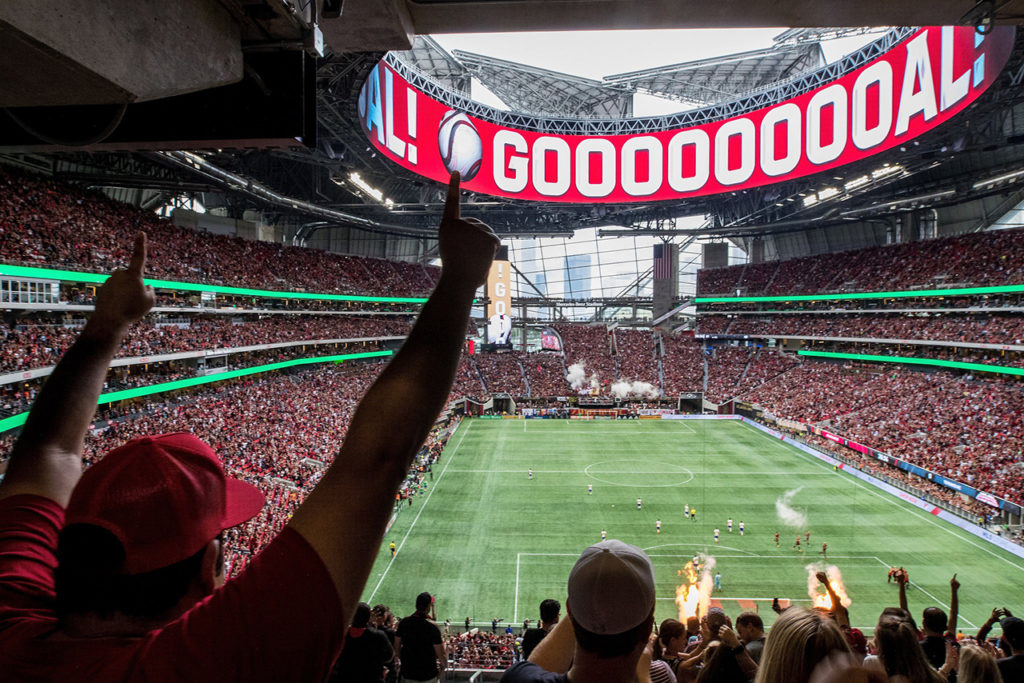One of Don Garber‘s great successes as head of Major League Soccer has been to emphasize strong facilities as the backbone for team success, insisting that prosperity is tied to team control of their soccer-specific stadiums. But is that totally true?
Garber and other MLS owners have argued that soccer-specific facilities provide the best fan experience. And there’s no doubt soccer-specific stadiums can indeed provide a high-level experience; just attend a match at Children’s Mercy Park or Orlando City Stadium, and you’re pretty much guaranteed to have a great time.
But take a look at the MLS attendance figures, and the advantage of 20,000-seat soccer-specific stadiums isn’t totally clear. Atlanta United FC has upended the soccer-specific argument by pacing league attendance at Mercedes-Benz Stadium, a facility designed for both soccer and NFL football. Second: the Seattle Sounders, playing out of an NFL stadium. Third: Toronto FC, playing out of another soccer-football hybrid in BMO Field, albeit a stadium designed for the larger CFL field.
Then head to the bottom half of the attendance rankings: you have a slew of teams playing in smaller (20,000 and under capacity) soccer-specific stadiums, such as San Jose Earthquakes (where consistent sellouts are a thing of the past), Colorado Rapids (where the stadium is located on the outskirts of Denver at a time when the center city is booming) and Chicago Fire.
But as MLS looks to expand, maybe a little more ambition is in order. Right now the league is moving forward with expansion bids more along the Kansas City and LAFC lines: smaller, 20,000-capacity stadiums. That’s the plan for Allianz Field in St. Paul and Audi Field in the District of Columbia, but we’re wondering if future stadiums on the larger side aren’t in order. Nashville is proceeding with a 27,500-capacity stadium, and FC Cincinnati’s tentative plan calls for a 25,000-capacity stadium. Smart. Orlando City and LA Galaxy show that well-run teams can hit the 25,000-per-match sweet spot–an important lesson for NYC FC management and expansion-team owners as they move forward.
The lesson here: there’s no one route to MLS success at the box office. The Atlanta model won’t work in most markets, and in some cases the soccer-specific model needs to be more ambitious. MLS was a pioneer at shaping the fan experience with stadium architecture, and with technology shaping that fan experience, it’s time for the league to start thinking bigger.
Image courtesy Atlanta United FC.
This article first appeared in the weekly Soccer Stadium Digest newsletter. Are you a subscriber? Sign up here for your free subscription!

